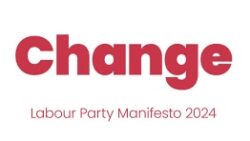ANDY HANSFORD wonders whether foundation hospitals will be a fig leaf for privatisation of the NHS.
The Tories tried to reform the National Health Service by setting up an ‘internal market’. The result was a failure, with a massive increase in accountants to count debits and credits in a whole new layer of contracts. Services were externalised and privatised.
In opposition, Labour understood this as an effort to break up the NHS by instituting a two-tier system, the last gasp of which was the fund-holding General Practitioner (GP). A victorious new Labour got shot of it. Incoming health secretary Frank Dobson’s grin was mirrored across the country. Blair’s promise at the door of number 10 was to govern as new Labour. So his government couldn’t just reverse Tory reforms, they had to have new reforms of their own. Their new ideas included retaining league tables, considered voter-friendly, as a prop for ‘standards’. However their new vision for the NHS – ‘a patient-centred’ NHS – is a demanding one, and it demands a clear split between purchasers of healthcare (now called commissioners) and providers of healthcare.
Who pays, says
For most of us, our Primary Care Trust (PCT) will be the most important moneybags in the local NHS, and it will buy services from our hospital and other primary care providers. We will also see ‘practitioner commissioning’ – which is a little bit like your GP holding the funds to pay for your healthcare.
This is said to be fair because, instead of power residing all the way over in Whitehall, your local healthcare economy will be run by local players: GPs, PCTs. You can choose your GP, at least in theory. And your PCT is governed by local notables who apply to the NHS Appointments Commission to serve as paid PCT trustees.
This gives local people the freedom to challenge NHS provision, at least on the commissioning side, which is different from the Department of Health exercising a monopoly on local decisions from Whitehall or its Leeds HQ.
As for the providers, can we have power over local health provision?
Foundation hospitals, or to be pedantic, NHS foundation trusts are a new type of public benefit corporation modelled on co-operative and mutual traditions. At the moment there are just 32; later this year there could be 90; by 2008, the government wants all acute NHS trusts to be in a position to apply for foundation trust (FT) status.
Foundation Trusts were created by the Health and Social Care (Community Health and Standards) Act 2003. The tag ‘foundation hospitals’ is not always accurate, as most trusts cover more than one hospital. Sheffield’s FT combines several hospitals. These organisations might employ 5-10,000 people and turn over about £250-500,000 per year.
However FTs, and trusts now applying for FT status, are massively varied in scale, kind and approach. Some are focused on particular medical specialisms which mean they are effectively almost national, and some are mental health trusts which are already deeply engaged with both their service users and local communities.
At the top of an FT’s decision-making structure is a chair and her (or his) board of directors. The board includes executive directors, including the chief executive and finance director, but the majority are non-executive directors who don’t work for the trust. Together the directors are fully responsible for the operations of the trust, and essentially set its strategic direction.
There is also a board of governors, chaired by the same person as the board of directors, which has some control over the directors – to approve the chief executive’s appointment, to elect the chair, to help select the directors, and to be consulted on strategic plans and direction. It also has responsibility for the members. The governors must include appointed representatives from the local council, the PCT, and the local voluntary sector. The others are elected by the foundation hospital’s members.
These members are recruited like the members of any co-op or mutual, and include hospital staff, patients and volunteers, as well as local residents. Some FTs automatically inscribe each new member of staff as a trust member unless they ‘opt out’; others require workers to ‘opt in’ if they want to join. This is partly why FTs can have anything from about 5,000 to more than 100,000 members. Voter turnout is usually higher in trusts with fewer members, and lower in the largest ones.
Outside the locality, there are plenty of other bodies the trust has to answer to. The Healthcare Commission is the national watchdog for quality and effectiveness throughout the NHS, but FTs also have their own regulator, called Monitor – www.monitor.org.uk – a good place to start finding out about foundation status and regulation. One independent source is the respected health think-tank, the Kings Fund – www.kingsfund.org.uk – although it is beginning to enter into relationships with foundation trusts that will reduce its impartiality. Online publications include Health Service Journal, and the British Medical Journal.
Stakeholders
In theory, all the stakeholders are engaged in a trust’s structure and the FT is able to achieve its objectives and discharge all its responsibilities. Like co-ops, an FT has members who can elect the next tier of power: the governors. Like plcs, it has executive directors and non-executive directors who are appointed and remunerated by its own search and remuneration committee, against job descriptions and person specifications which rule out most potential applicants: the technocrat layer. Like the public sector, it enjoys tacit values which it rarely makes open to analysis, and has arcane financial arrangements few comprehend.
The commissioners – GPs, PCTs – are represented through appointed governors and have the commercial power not to purchase the hospitals’ services. Other significant local stakeholders are all involved through the board of governors. This structure is intended to be fully accountable nationally and locally.
There is potential for the service to be run for its users’ needs, not for its providers’ convenience as is often the case with public sector provision for the poor, according to many critics of paternalism and welfare state Morrisonianism. What is being offered is the opportunity for local people, if all things go well, to influence the running of their healthcare services in a way not seen since before 1948. The creation of the NHS was not the beginning of time; prior to 1948 Britons formed health mutuals to protect themselves and, it was intended, the working class as a whole from the random tragedy of ill health.
That potential is the first point I wanted to make. My other two are not so complex.
Winners and losers
First, there seem to be people out there who are keen to ‘think the unthinkable’. Bill Moyes, chair of the regulator Monitor, argues that when an FT fails it should really fail. In other words, if an FT gets into financial trouble, it should really go bust.
It’s not just him. The Foundation Trusts Network, led by former Communist Sue Slipman, has its eyes on what happens if an FT is a runaway success, while around it are trusts that are not so good at serving the community. Surely, she argues, ‘lateral expansion’ should be possible; in other words, a good FT should be able to take over failing hospitals.
There appears to be some logic to these views until you consider the new financial and, frankly, commercial freedoms enjoyed by FTs but not by other acute hospitals. These include better powers to plan new hospital development, the ability to carry over any surpluses into the next financial year, and, particularly, the freedom to pay higher wages for in-demand specialist workers. Winners will be winners.
Steps to a democratic NHS?
Finally, there are wider lessons to learn from these reforms if they go right. What if this is the opportunity for pre-1948 levels of community control? What if FTs actually have the potential to enable radical democracy to encroach on the space left by a receding, centrally-planned public sector, run by itself to suit itself? What if this radical democratic progress slips the leash of the plc-like top layer, a potentially self-appointed board of directors, and starts to put elected governors forward as directors?
This has even been envisaged in some parts, and viewed as a potentially positive outcome. What if local people run local healthcare in their own interests, and start tackling a health inequalities agenda rather than just concentrating on sickness?
There are two major blindspots in this happy vision. At present, where elected governors have sought to join the board of directors, they have not yet succeeded. There is no programme of training for governors, and critics who look at the plc sector point out that directors there are bought in, not home-grown. Also, at present, the powers of the boards of governors seem severely curtailed.
Of course, the British working class has a strong tradition of growing its own local and national leaders. Maybe we can look at training future potential governors of our own. Co-ops can show us how.
The vested interests and the community interest are huge in the healthcare economy. There is much to play for, and signs that there might be some proper democracy and genuine community control, although friends of the two-tier NHS are also lining up to seize their opportunity. What’s sauce for the goose is sauce for the gander. The fight is on for democracy and the values of the NHS.


